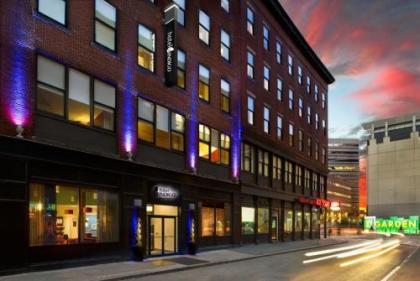The Perfect 2-Day Guide to Boston’s Historic Freedom Trail
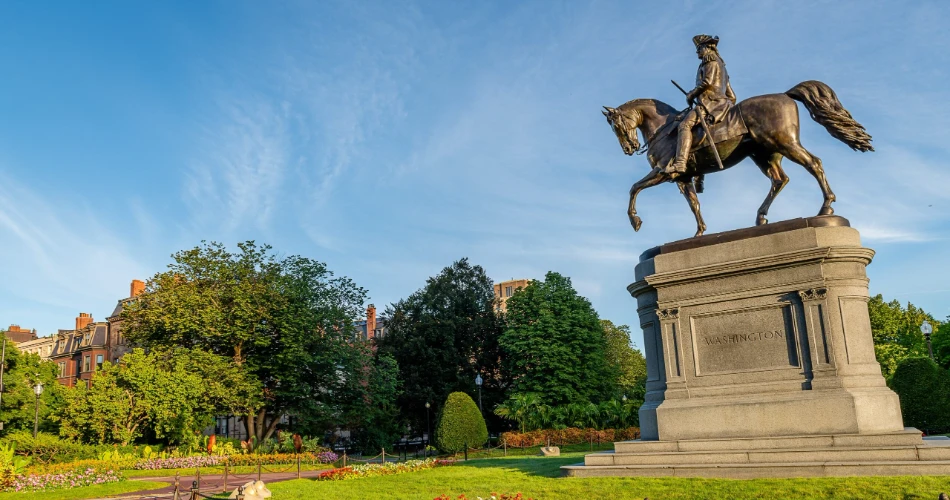
Put on your walking shoes and step into history! (And maybe stretch first — this trail is basically a history marathon.)
Boston—or as many people call it, “The Cradle of Liberty”- is a city where every brick, every cobblestone, seems to contain a story about the nation’s fight for independence. Situated in the heart of Massachusetts, Boston has evolved into a vibrant, living tapestry of history, culture, and charm. At the heart of it all is the Freedom Trail — a 2.5-mile walkway connecting some of the most important historic sites in the United States. In addition, you’ll get to discover amazing museums, ancient meeting houses, public markets, and locations that were instrumental during the birth of a nation. When you pair that with Boston’s delectable corner cafés, picturesque waterfront views, and vibrant neighborhoods, you’ll have a city for travelers who thrive on curiosity. (And coffee… lots of coffee.)
Experience the lively and historic journey of the Freedom Trail in Boston with this 2-Day Guide ideal for history buffs and new visitors. Your itinerary will include plenty of walking, rich storytelling, and a taste of the local flavor as you visit the famous stops
Continue reading for your perfect guide to Boston's historic Freedom Trail and delving into the most thrilling modern-day adventures.
Day 1
Starting Point at Boston Common & Massachusetts State House
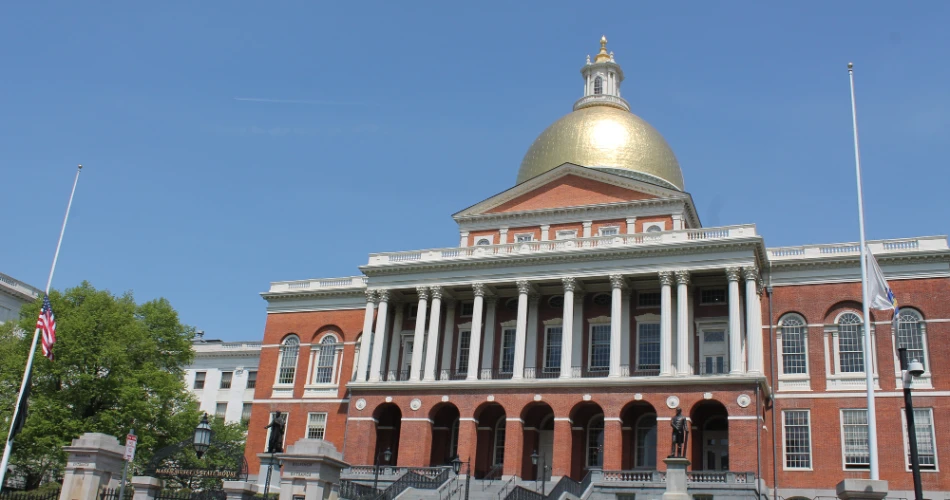
Begin your journey at Boston Common, a historic green space recognized as the nation’s first public park. It is a wonderful green space, and it effectively takes you back to colonial Boston and a peaceful beginning to your walking tour. (Plus, it’s a great place to watch squirrels plotting world domination.) Immediately across the street is the traditionally impressive Massachusetts State House. This important structure, with its glimmering gold dome, was built in 1798 and was the beginning of the home of the Massachusetts government for centuries. This site is essential as a reference point for colonial governance history. Starting day 1 at this location will ground your experience in history before engaging with the rest of the rich narrative about colonial Boston.
Reflecting at the Granary Burying Ground
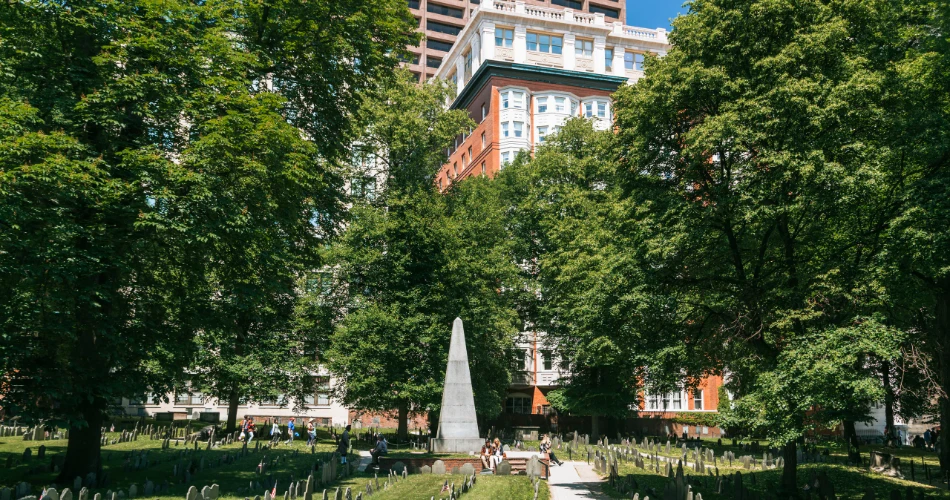
After a short walk, you will come to the Granary Burying Ground. This is the final resting place of revolutionary luminaries: Paul Revere, John Hancock, and Samuel Adams. The Franklin family is memorialized with a granite obelisk, and the gravestones of victims of the Boston Massacre are marked with cobblestones. From walking through the Granary to reading a ledger of revolutionary thought and action, you get to spend an enjoyable time here and appreciate the tangible links to key individuals in colonial Massachusetts.
Engage with Revolutionary Sites
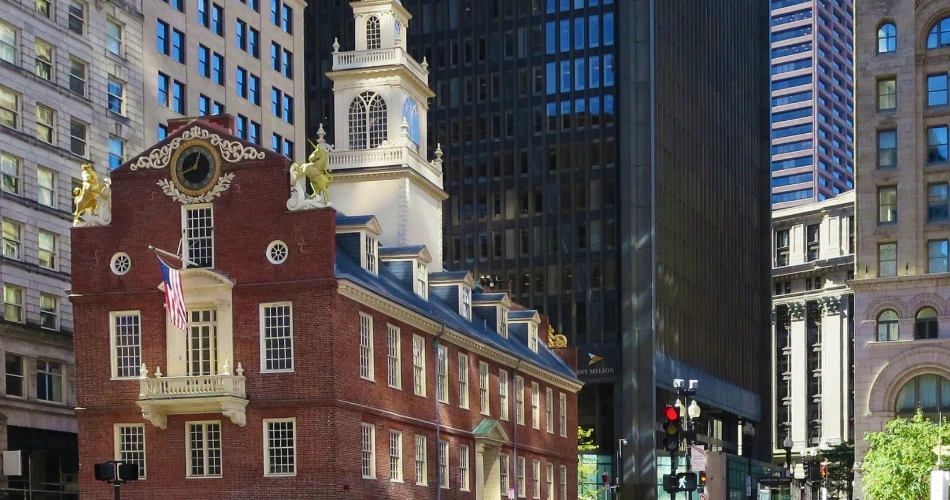
Old South Meeting House & Old State House are two examples of revolutionary culture. The Old South Meeting House was where crowds of colonists spoke about resistance before the Boston Tea Party, and the Old State House was where the colonial legislature operated, and the Boston Massacre marker sits. The two structures are significant for many reasons, but there is a difference between dissent, the public expression of views with a role in the government (Old South), and being seated in government power (Old State House). (Basically: one was for loud opinions, the other for making the rules.)
Stand at the Boston Massacre Site & Faneuil Hall
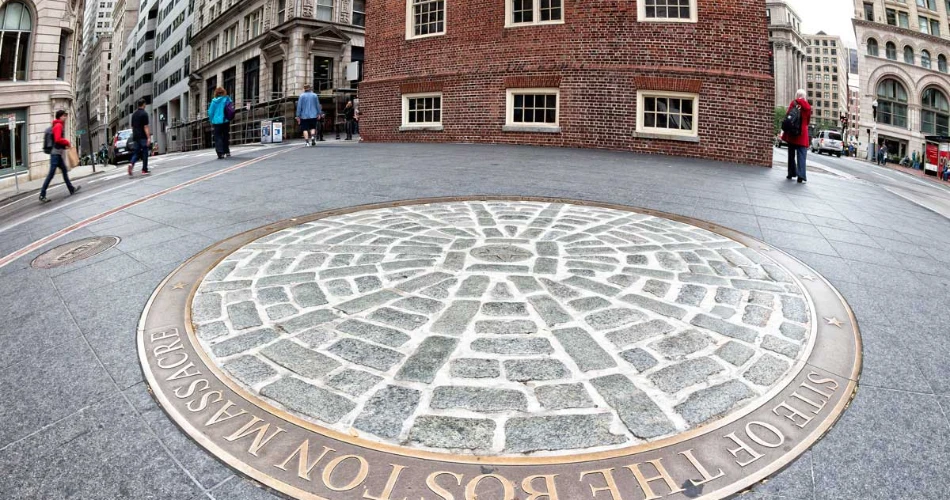
Directly in front of you is an unassuming rough circle of cobblestones which denotes the Boston Massacre site. This is where colonists lost their lives protesting against British rule. Allow this small yet mighty marker to ground you in the history of resistance. (It’s amazing how much history can fit in such a small circle.)
Merely a few dashes away is Faneuil Hall, the "Cradle of Liberty". Founded in 1742, it was the location of furious speeches from Samuel Adams and James Otis, which ignited crowds to resist British Rule. Today, Faneuil Hall buzzes as a market basking in historic liberty, commerce, and daily life. Spend a moment letting the public performers awe you, have a snack, and reflect on the mingling energies of a past and present, and where resistance fits within it. (Also, good luck resisting the smell of food here — that’s a modern battle.)
Travel Back in Time to Paul Revere House
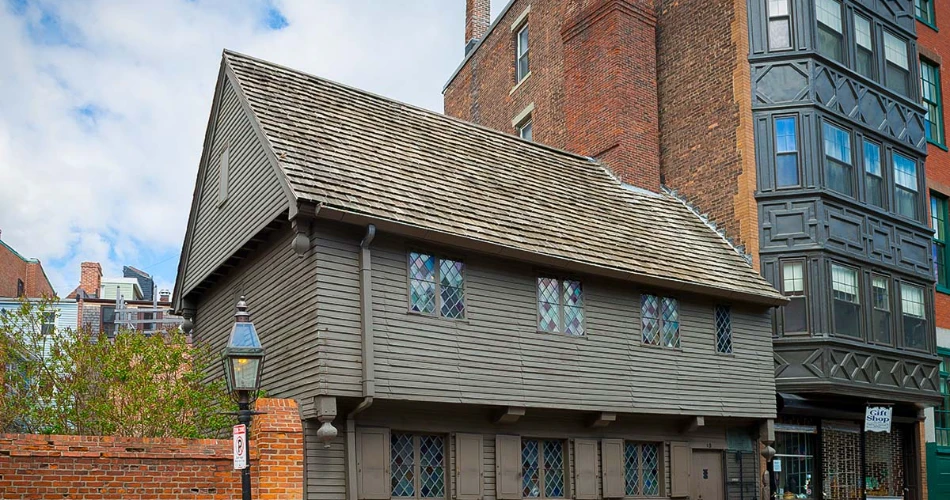
Continuing along the North End brings you to the Paul Revere House, the oldest building along the trail and the home that Revere lived in during the mid-1680s. It is preserved nearly as he found it, with most of the original structure intact, styled to resemble a Colonial house. This small space gives you a physical sense of the domestic world of an influential patriot. The adjacent visitor center provides some context for his midnight ride and what life as a craftsman was like. (And yes, no midnight Uber alerts back then — just lanterns.)
Enjoy Old North Church & Copp's Hill Burying Ground
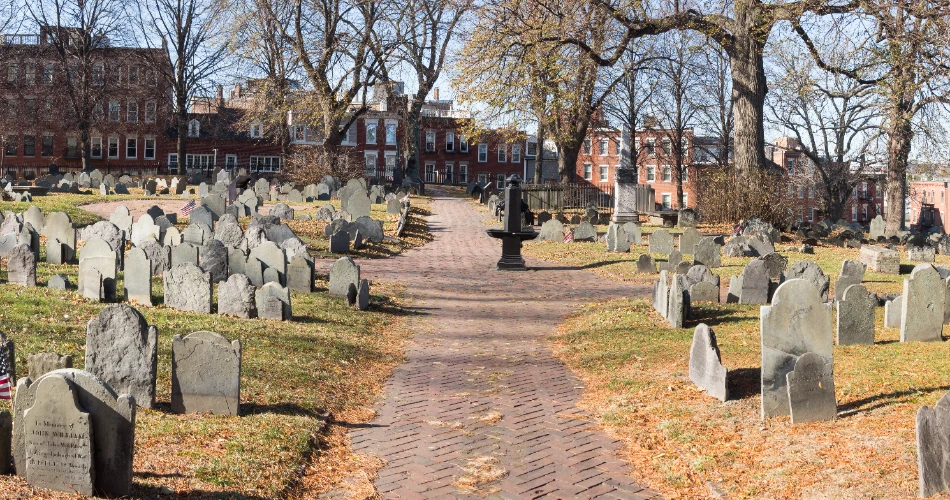
Nearby, Old North Church—famous for its "one if by land, two if by sea" lanterns—still towers over the North End skyline. Its steeple and interior have witnessed colonial spies on dark nights. Just uphill is Copp's Hill Burying Ground, where graves of civil war patriots and colonists face the harbor. Together, they speak to the spiritual and the difficult balance of remembering lives lost while igniting rebellion. Their stories add depth to the narrative, from silent pages of clandestine signals to the solemnity of remembering all that has been lost.
Retrace Steps along the Charles River Pedestrian Bridge to Charlestown
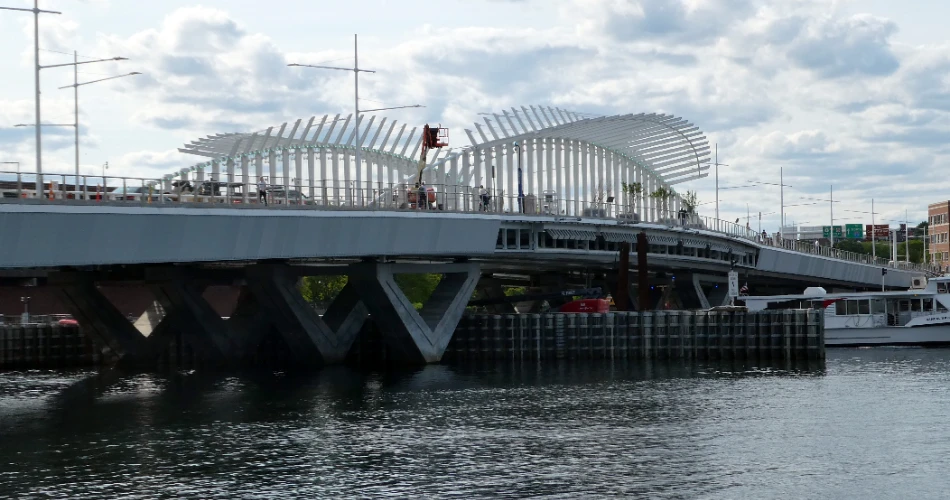
Crossing into Charlestown, walk across the contemporary Charles River Pedestrian Bridge, also known as The Bill Russell Bridge, connecting neighborhoods while also providing lovely views and a space transition from the intense present to the revolutionary battlegrounds ahead.
Reflect at Charlestown City Square Park & Winthrop Square
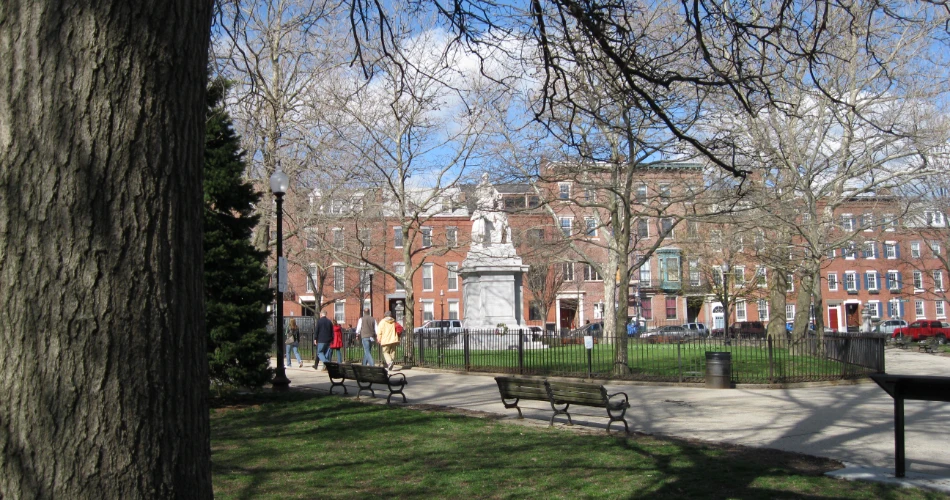
Once in Charlestown, take time to relax at Charlestown City Square Park, an urban respite space featuring the symbolic "Cod and Corn Fountain," referring to the hard-earned survival from the sea and land. Shortly to the south, you have Winthrop Square, formerly a training field, offering a moment away as you wander the brick pathways. Both parks offer a vantage to consider those fishermen, farmers, and patriots who built the colonial culture and society they knew. (Also a great excuse to sit down before the next climb.)
Climb the Bunker Hill Monument
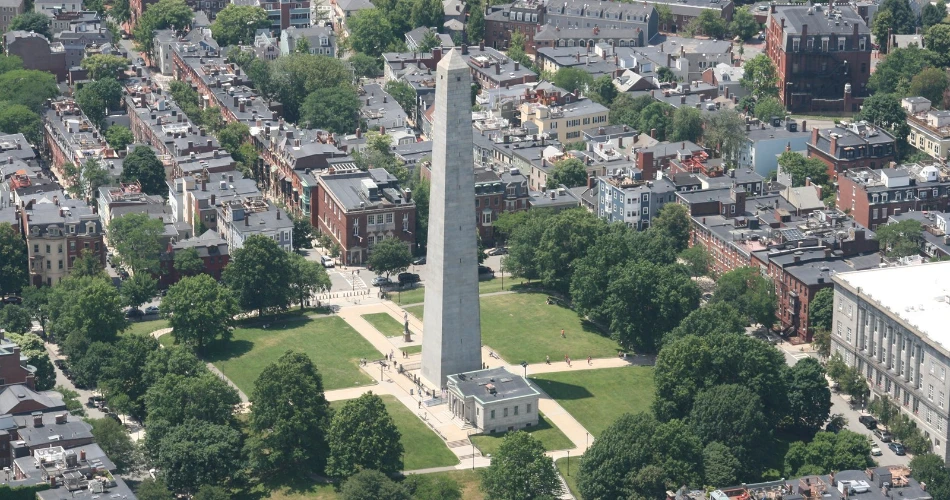
You're now at the Bunker Hill Monument, a massive granite obelisk created to honor an early and very serious battle of the Revolutionary War. Climb the 294 steps to the observation chamber and savor sweeping views of Boston Harbor—each step a quiet echo of history. While the British technically won the battle, the high cost they paid galvanized the American spirit and helped weave the revolutionary narrative that would soon unfold. (Leg workout: complete, perspective gained: priceless.)
Visit the USS Constitution in Charlestown
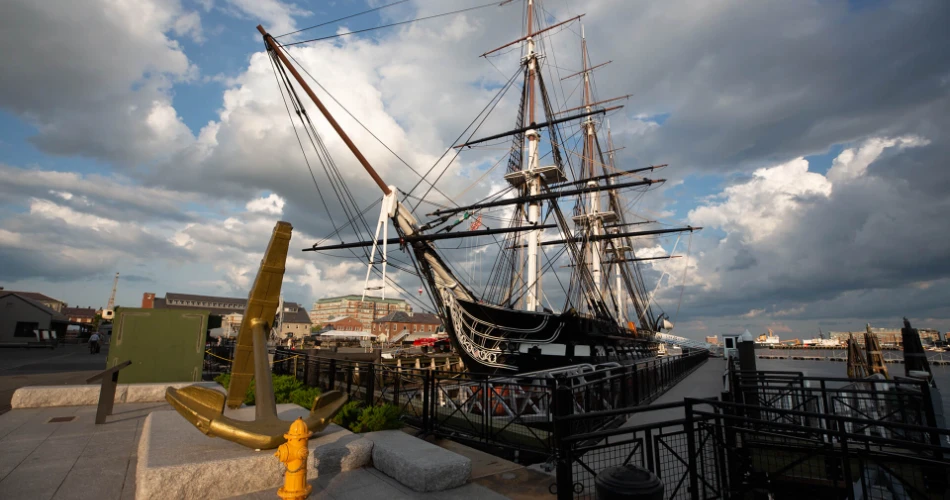
Finish Day 1 with a short walk over to the USS Constitution, fondly known as "Old Ironsides," at rest in the Charlestown Navy Yard. Launched in 1797 and built entirely of wood, this warship is still the oldest commissioned naval vessel in the world. Simply boarding the Constitution offers an odyssey in naval engineering and historic maritime defense. Whether on the decks or in the nearby museum, when you leave, you won't be able to shake the feeling that you are floating off of Boston's history from the Revolutionary War to the building of a nation, through this brave and proud ship.
Day 2
Literary Heritage of the Old Corner Bookstore
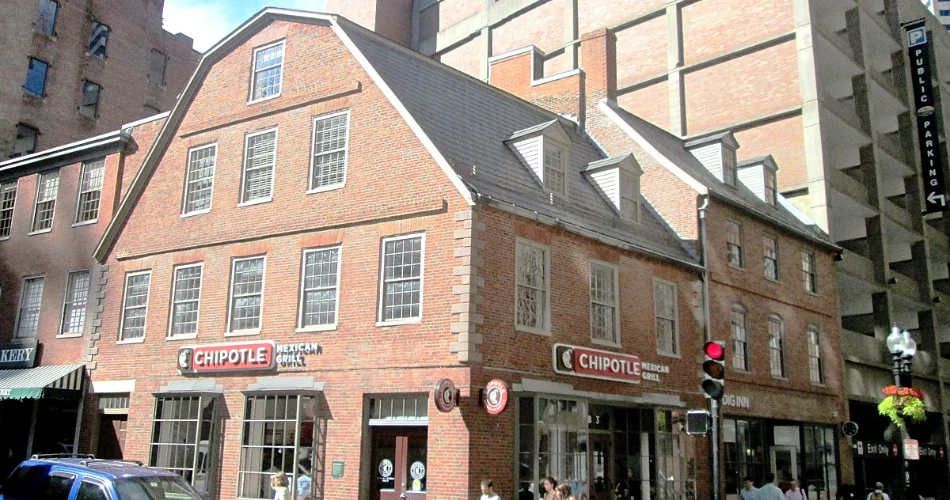
Initiate day 2 at the Old Corner Bookstore, which originally opened in 1718. What used to be a commercial property became a force to be reckoned with in the 19th-century American publishing industry, with many important works, such as Walden, The Scarlet Letter, and Midnight Ride of Paul Revere. (Basically, it was the influencer hub of its day — just with ink instead of Instagram.) It may not function as a bookstore anymore, but it still remains a well-known literary landmark, bridging the political time of the Revolution with a cultural time after the Revolution.
Reflect at the Boston Irish Famine Memorial
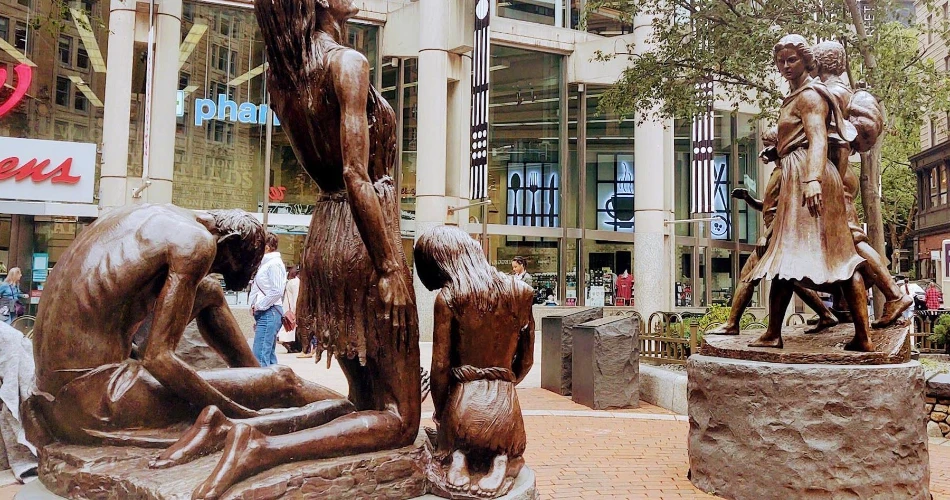
The Boston Irish Famine Memorial is just across the street from Old South Meeting House, which opened in 1998. Two bronze sculptures represent two families, one suffering during Ireland's Great Famine and the other having moved to America and finding success, alongside narrative plaques. This memorial is a poignant adjunct to the Freedom Trail by commenting on resiliency, migration, and the construction of identity and adding depth to the revolutionary story. (Also a reminder that Boston history didn’t end in the 1700s — it just kept collecting stories like a history hoarder.)
Visit King's Chapel & Chapel Burying Ground
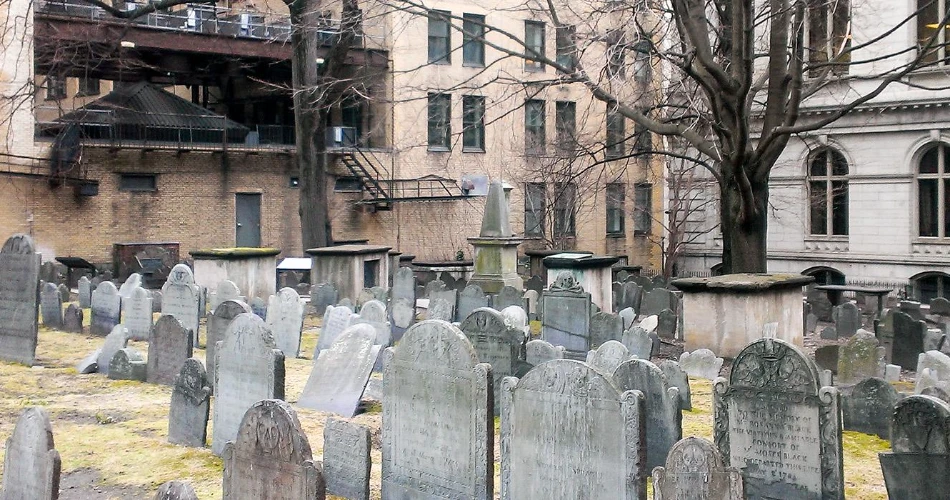
Not too far off the main path will be King's Chapel. This is Boston’s first Anglican church, which was founded in 1686. The Chapel itself has a beautiful granite exterior, but the inside is rare in being serene and contemplative, a stark contrast to the revolutionary fervor of the city. Next to King's Chapel is the King's Chapel Burying Ground. This has been the oldest English cemetery in Boston since the 1630s. They both share stories of colonial-era life, death, and faith. It is a beautiful part of Boston where you can think about the spiritual and civil development that has taken place in Boston over the past centuries. (Also, a place to marvel at just how long gravestones can last in New England weather.)
Stop at the Boston Latin School & Benjamin Franklin Statue
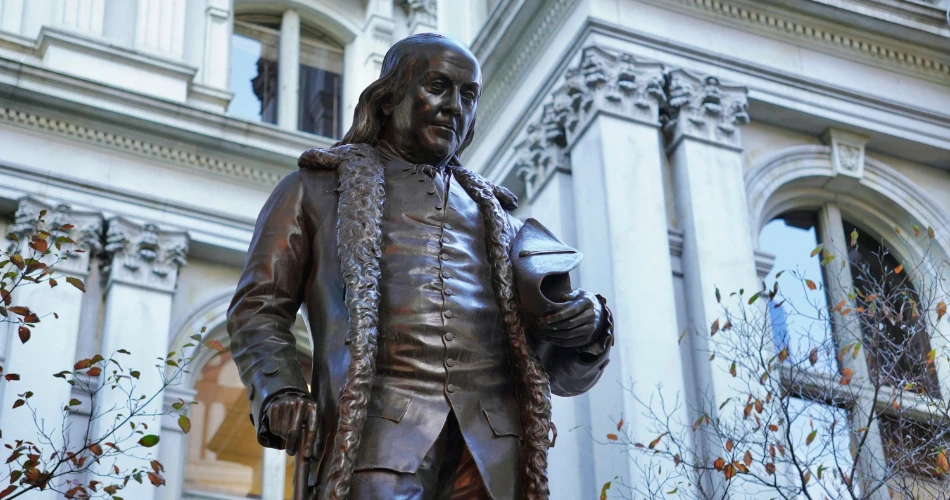
With a few steps, you will arrive at the site of the Boston Latin School, which was the first of its kind in the country, established on April 23, 1635. While the original building no longer stands, there is a mosaic and statue of Benjamin Franklin, who is the most renowned alumnus. The memorial is a great tribute to a building and an institution that helped to shape a future Founding Father. This installation helps to connect early education advancements and revolutionary tales.
Enjoy Public Art
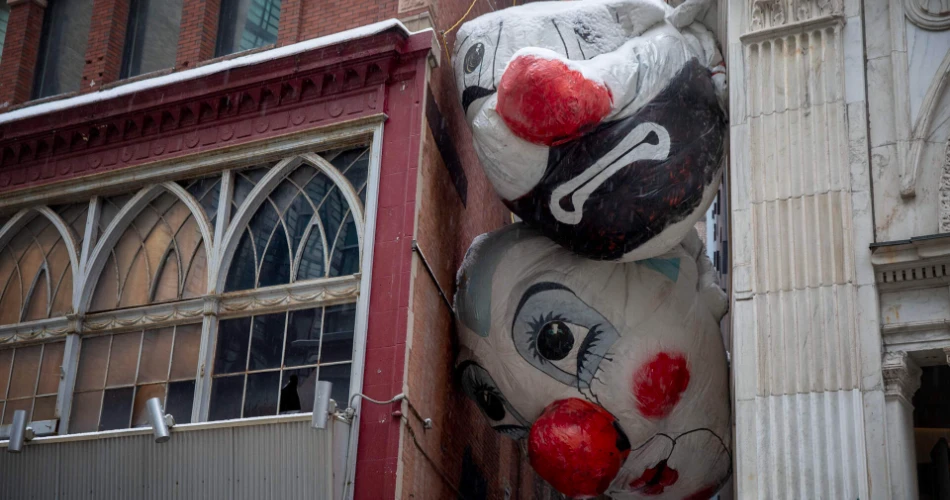
Harbor Fog on the Greenway: A little off the main path, the Rose Fitzgerald Kennedy Greenway provides a modern contrast to the colonial architecture. Here you’ll find Harbor Fog: Stilled Buoys Dream of a Lost Harbor, an interactive art installation by Ross Miller. It activates with mist, colored lights, and harbor sounds — offering a contemporary meditation on Boston's maritime history. (Also doubles as an excellent “mysterious fog” photo opportunity.)
Take A Stroll to The Boston Public Market

In an example of the artisan spirit of Boston, make your way to the Boston Public Market. The Boston Public Market is an extraordinary farm-to-table food hall featuring all kinds of artisan food with New England cheeses, oysters, and lobster rolls. It is a modern homage to Boston's culinary history, and a lively juxtaposition to the solemn historic monument, making it one of the best places to visit in Boston for lunch or just to take a flavorful break. (History is always better on a full stomach.)
Wander Through Brattle Book Shop & Park Street Church
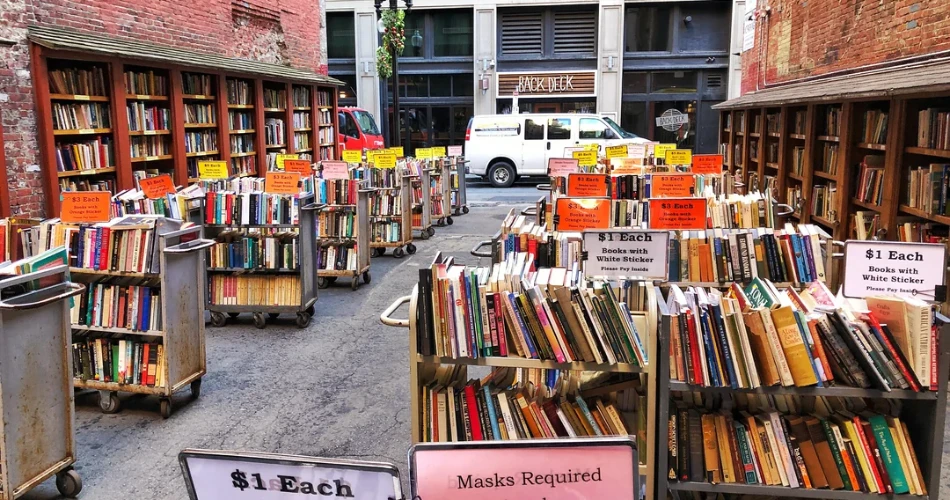
Near Park Street Church, a historic church building with a steeple dating back to 1809, sits the Brattle Book Shop, one of the oldest antiquarian bookstores in the United States. Below Boston's Ladder Blocks—an area encompassing buildings in architectural styles ranging from Gothic to Art Deco—you can find religious and literary history alongside an array of architectural aesthetics. It’s another layered stopping point that lets the trail flow through Boston’s cultural landscape. (Translation: books, history, and cool old buildings all in one stop.)
Visit North End Crafts at North Bennet Street School Gallery
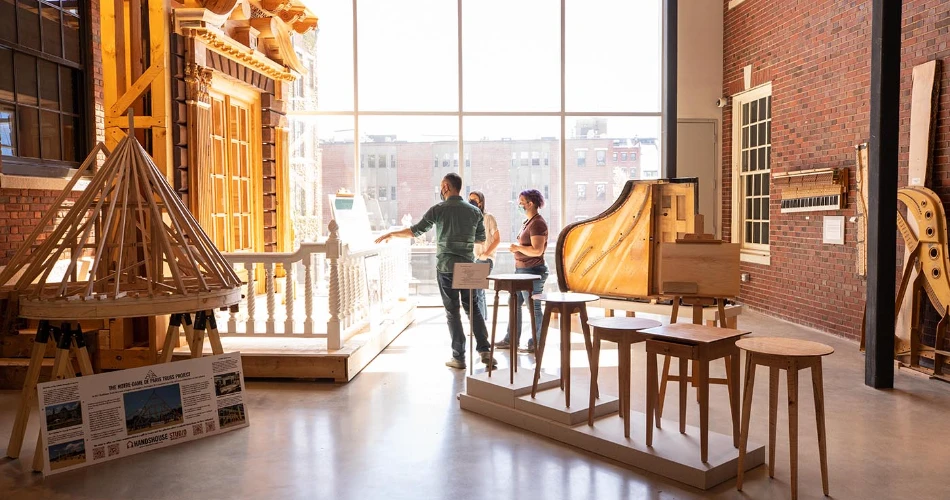
Also close to Old North Church, don't forget to check out the North Bennet Street School's gallery store. This private vocational school has been training craftsmen in cabinetry, instrument repair, bookbinding, and more for over a century. The school has a gallery store that sells handcrafted furniture, marbled paper, and books, giving you the opportunity to explore more of Boston’s history by combining it with craft. (Because nothing says “Boston souvenir” quite like a handmade chair… if you can carry it home.)
Visit the Boutiques in Charlestown by Bunker Hill
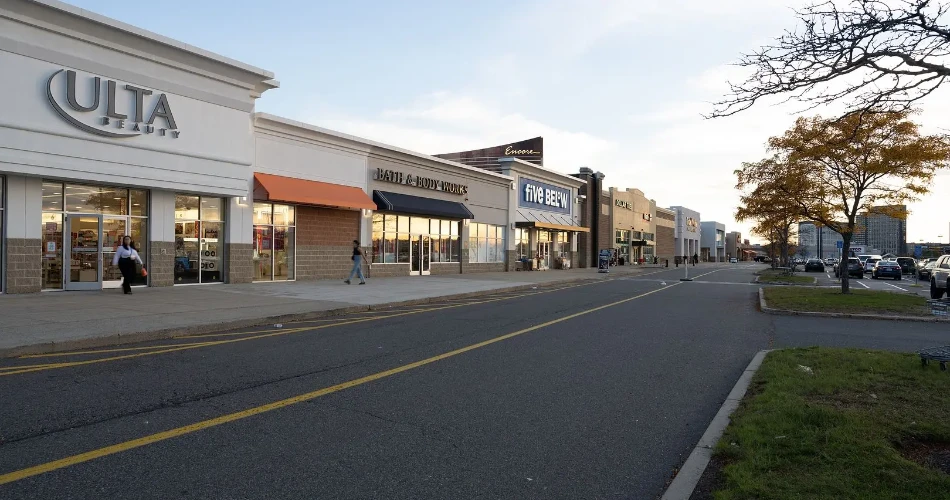
Hang around to explore the artisanal boutiques in downtown Charlestown as one of the best Boston sightseeing places. Place & Gather sells needlepoint pillows and Bunker Hill Flag trays, Monroe Home & Style has pottery and alpaca throws, along with so many more local artisans that continue the historical trajectory of the trail into practical, area-specific souvenirs. (Perfect for when you want to say, “I went to Boston and brought back… a throw blanket and a story.”)
Ready to visit? Here are Boston’s best hotels near the Freedom Trail to make your stay unforgettable.




